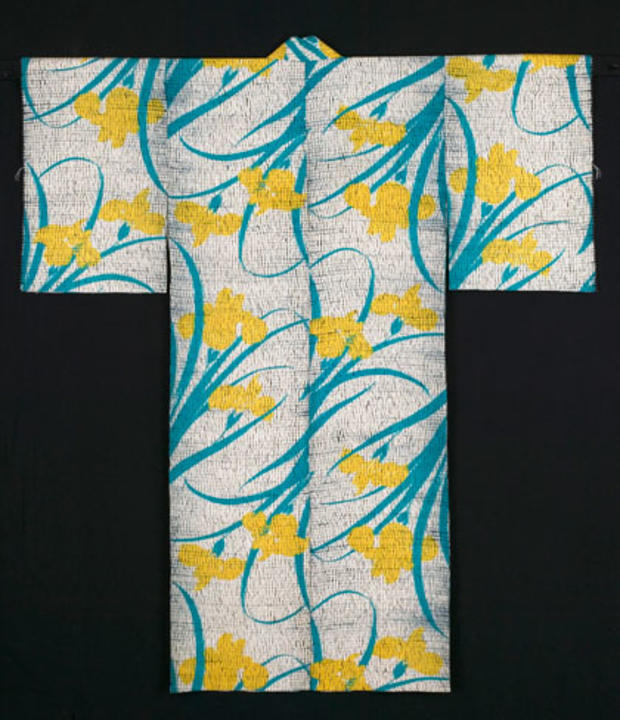The Evolution Of The Japanese Kimono
The Art Institute of Chicago
111 South Michigan Avenue
Chicago, IL
(312) 443-3600
Mon–Wed 10:30 a.m.–5 p.m.
Thurs 10:30 a.m.–8 p.m.
Fri–Sun 10:30 a.m.–5 p.m.
$18 Adults
$12 Children, Students, Seniors
Children under 12, Free
!
www.artic.edu/aic
In the rush to get out the door for work, getting dressed in the morning probably isn't exactly an artistic moment. But clothes are an easy way to express ourselves and they can reflect what's going on in the world around us. In Japanese Kimono, 1915–1940: From Tradition to Ready-to-Wear, on view at the Art Institute of Chicago through November 13, the modern evolution of the pretty garment is traced through dozens of kimonos on display.
Beginning with more formal kimonos that feature designs clustered on the bottom half of the garment and on the sleeves, the exhibit explores patterns, sleeve length and more from the Taishô period (1912–1926) and the early Shôwa period (1926–1989). There are many examples of hitoe (unlined summer kimonos), more casual garments that feature all-over patterning and shorter sleeves.
Patterning is one of the more interesting aspects of the show - one section looks at bold designs, including a red, black, ecru and mustard print from the 1920s to 1930s that appears to have Bauhaus and futurist influences. But it's really characteristic of Japanese tendencies toward geometric forms and abstraction. Outside influence does appear after 1854, when Japanese harbors opened to trade, but it's less in designs, and more in manufacturing processes. Kimono manufacturers embraced mechanical looms and other tools to ease their traditional production, but not entirely replace it.
The 20th century saw the advent of ready-to-wear kimonos, which featured enlarged motifs and geometric patterning. Their popularity increased after people lost their homes following the 1923 Great Kantō earthquake decimated Tokyo, and reflected the interest in Western ready-to-wear fashions. They were produced in factories, unlike more traditional kimonos that were made specifically for the wearer.
While the history behind kimono production and design is interesting, there's plenty to appreciate from merely looking at the garments. There are kimonos in turquoise, orange, red, blue, purple, silver and gold, and patterns include flowers, ships, wheels, leaves and hemp. The kimonos on display show how Japanese designs changed over time and varied between fancy and casual outfits, while maintaining the traditional look of the garment. It's a pretty exhibit and a reminder that fashion is just like any other art form — and one we get to see all around us, every day.
Japanese Kimono, 1915–1940: From Tradition to Ready-to-Wear is on view at the Art Institute of Chicago through November 13.




